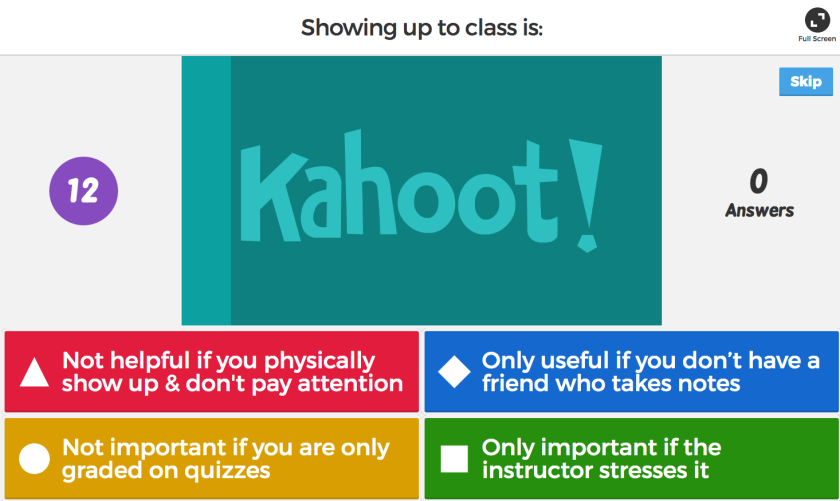This is a cross-post between WordPress and Medium.
Kahoot

I’d heard of Kahoot before, but had no idea what it was. It turns out to be some sort of learning response system. At City, we use Poll Everywhere as our main audience response system, which I’m rather a fan of. This is quite different from that though – particularly being specifically designed around gamified intentions, but also for the team-based elements.
As a pedagogical tool, Kahoot describes itself as useful to:
- Introduce new topics
- Challenge past performance
- Professional development
- Review, revise and reinforce
- Join the global classroom
- Re-energise and reward
- Turn learners into leaders
- Formative assessment
- Discussions and surveys
That’s plenty of possible uses in teaching right there. I signed up for a Kahoot account and tried out a couple of random quizzes. It seems to need a main screen for displaying the quizzes and mobile devices for responding to them in order to function best, so is clearly designed for face-to-face teaching. I could see pretty quickly how it would be fun to use with teams, that it is very easy to pick up, and could be used in a variety of different ways for learning.
I’d need a bit more time to get to know how to use it properly, but it would be a great way to start or finish off a workshop. This might be something that ends up in my (occasional) in-class toolkit.
Nobel Prize games
The Nobel Prize’s official website has a series of Flash-based interactive games and simulations for promoting understanding of the science, research, and work of the Nobel Laureates. I went to the Physics page and played the first game I could find, which turned out to be called the Blood Typing Game.

Being Flash-based, this obviously means that the game can’t be played on most mobile devices, so it is quite a different experience to Kahoot. I jumped straight in and started clicking stuff to get a feel for the game.
I must admit that, although this approach of random clicking isn’t likely to lead to me learning very much, there also didn’t seem to be much obviously around or within the game that allowed me to learn much from it anyway. The premise was that a series of patients had been involved in a traffic accident and needed blood transfusions to survive. My job as the game player was to take their blood, assess it, then give them the correct transfusion.
I think most of my patients died a few times on that operating table! Can’t say I really learned very much about blood types though. Undoubtedly the inclusion of these games were big steps forward for the Nobel Foundation at the time in terms of creating engagement around their content, but they do look slightly dated now.
***
As Buckley and Doyle (2014) suggest, gamifying learning can both increase student engagement and enhance learning, although the impact on participation can vary depending on intrinsic or extrinsic motivations. Even with the most serious of topics, there’s often room for adding a little light fun to the learning experience though 🙂
